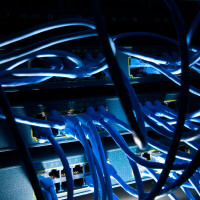 Fuel Cells, June 05 2009 (The Hydrogen Journal)
Fuel Cells, June 05 2009 (The Hydrogen Journal)
– Horizon Fuel Cell Technologies of Vancouver has announced plans to use its new Aeropak fuel cell system in unmanned aeroplanes, with shipments starting this summer
Unmanned planes are typically used for security surveillance and intelligence gathering.
By using fuel cells, the aeroplane will be able to go up to 4 times further than with lithium batteries currently being used for this application, the company says.
The aeroplanes will carry 900 watt hours of electrical energy, fuelled from a dry fuel cartridge releasing hydrogen, in a fuel cell weighing 2kg.
Electric powered unmanned planes are much harder to detect than planes powered with combustion engines, because they are quieter and smaller.
By having more electrical power available, it is easier to add more sensors to the plane, such as infrared cameras and laser designators.
The plane will be demonstrated at the forthcoming Paris Air Show (June 15-18 2009).
The company did not announce how the fuel storage technology works, although other companies have announced they use sodium borohydride in their dry fuel cell cartridges.
Horizon Fuel Cell
Hydrogen power for ships –Hamburg
Feature Articles, May 15 2009 (The Hydrogen Journal)
– A great deal of research is going on in Hamburg to use hydrogen for ships – with trials on 4 different vessels. We spoke to experts at German energy consultancy Germanischer Lloyd about how it is happening
With the maritime industry likely to come under pressure to reduce greenhouse gas emissions, experts are looking seriously at the idea of fuelling the ship on hydrogen, so there are no CO2 emissions at all.
The world’s first hydrogen / fuel cell powered vessel for more than 100 passengers the “Alster Wasser” is already in operation on Hamburg’s Alster Lake. The vessel has been built and is operated within the scope of EC funded ZEMSHIP project.
Unlike a diesel engine, the fuel cell operates silently. This led to surprising discoveries about how much noise other parts of a vessel make.
On normal ships, the engine makes so much noise that nobody has worried about the noise which other components (such as pumps) make, says Finn Vogler, project engineer within GL department Risk Assessment and Mechanical Engineering,,
But on the “Alster Wasser”, people were suddenly aware about how noisy the rest of the ship is – and reducing the overall noise has proved a complex exercise. “As soon as they isolate one noise, they find 3 other noises,” he says.
The vessel runs on two 48 kW fuel cells and stores hydrogen onboard in 12 x 350 bar (high pressure) hydrogen tanks. The hydrogen is actually supplied to the fuelling station as a liquid, and evaporated and compressed before being pumped onto the vessel.
Fuel cells are also used in submarines built in Kiel. These submarines are a great commercial success because the fuel cells give the owner the benefit to enhance the duration for diving by a factor of 10. As the first class society GL already published guidelines for using fuel cells on watercraft in 2003 and has certified a number of ships according to these guidelines including the “Alster Wasser”.
Hydrogen fuel cells are currently not available to power larger ships, but they are close. Development projects have been started and will result in fuel cells for seagoing ships with a power of 500 kW per unit within the next 5 years.
“GL is contributing to this development by participating in the SchIBZ and Pa-X-ell projects which will start in July 2009” Mr Vogler says.
The available power of fuel cell systems will be able to cover the auxillary power needs of a large number of vessels. E.g. a typical ROPAX (roll-on, roll-off, passenger carrying) ferry needs from the total installed auxiliary power about 1.5 to 2 MW of constant auxiliary power, which can be provided by 3 or 4 large fuel cells.
The biggest problem with fuel cells is managing sulphur in the hydrogen supply – it needs to be removed before entering the fuel cell because it can do a lot of damage. There is no sulphur in hydrogen which comes from gas which has been liquefied (because the sulphur is removed in the liquefaction process) and there is no sulphur in hydrogen produced from separating water with electricity (electrolysis).
Hydrogen might not be the technology for the immediate tomorrow, but the longer term tomorrow. “I think this is on the right track, but it will take some time,” he says.
“We are getting much more interest in the technology. Every time the oil price rises – people say ‘maybe we need another solution.”
Hydrogen storage
It is unlikely that hydrogen will ever be directly stored onboard vessels, due to the amount of storage space required, Mr Vogler says.
If the hydrogen is made from reformed natural gas, this task could be completed actually onboard the vessel – so the vessel has natural gas storage. Research into the best ways of fuelling vessels with natural gas is already being made (for an anticipated series of vessels which burn the natural gas in a combustion engine).
If the gas was reformed to hydrogen and then put through a fuel cell to make electricity, it is much easier to reduce emissions of NOx and SOx (nitrous and sulphur oxides), Mr Vogler says, and the overall efficiency will be similar or even better than big diesel generators.
Another option is to generate the hydrogen onboard from a liquid fuel.
Demonstration projects
3 maritime demonstration projects are being planned using hydrogen no ships, funded by the German government.
The first project, SchIBZ (which stands for ‘ship integration fuel cell’ in German) is to install a fuel cell on a 90m vessel which carries paper from Scandinavia to Germany. The fuel cell will be installed in by Thyssen-Krupp Marine Systems.
A molten carbonate fuel cell onboard the vessel (a fuel cell which operates at above 600 degrees C). It won’t power the vessel’s propulsion, but it will power everything else – the ‘auxiliaries’ – eg pumps, lights and ramps. The project will start on June 1 2009 and run for up to 4 years. The module will be first tested by German shipbuilder Thyssen-Krupp Marine Systems befor the operation of the system on board.
The fuelling system will be to use liquid fuels (generated from gas, biomass or coal) which are put through an onboard reformer to make hydrogen, which is then put into the fuel cell to make electricity. The system is called “XTL” – which stands for X to Liquids – where the ‘X’ denotes different substances which might be used to make the liquid (eg gas, biomass or coal).
A second project, called Pa-X-ell, starting in July 2009, will use a fuel cell on a vessel, running on natural gas – but the reformer is included as part of the fuel cell rather than as a separate piece of equipment. The project will be carried out by the yards Meyer Werft, Friedrich Lürssen Werft and Flensburger Schiffbau Gesellschaft.
The importance of this project is trying to find ways to include a number of fuel cells and reformer units around the ship – so if one goes out of action, or if there is a fire in one part of the ship, there are others available which can get it to port. This configuration will probably use natural gas cooled down to a liquid.
The third project, Hy-ferry, realised by Beluga Shipping will be to install a polymer electrolyte membrane (PEM) fuel cell onboard 2 ferries running in coastal waters and the port of Bremen, Germany, using gaseous hydrogen which has been generated from wind power making electricity to electrolyse water.
All of these projects are funded by the German government, under a mother project called ‘e4ships’. Further information about them (some in English) is available on the website www.now-gmbh.de.
The German government believes that its financing can get the hydrogen industry started.
Germanischer Lloyd’s role in these projects is to provide safety analysis and consultancy, covering the fuel cells, reformer technology and overall safety assessment. In other words, it provides usual services which classification societies provide to the maritime industry.
On the subject of hydrogen safety, Mr Vogler believes that it is no problem with today’s technology. “If you handle it right, it can be safer than gasoline,” he says.
Germanischer Lloyd recommends double wall pipes, so the hydrogen will be contained if one pipeline fails. It is important to avoid having an explosive mixture of hydrogen and air in the presence of a spark.
Hamburg has a number of other projects going on, including forklift trucks at Hamburg airport running on hydrogen, and several hydrogen cars and hydrogen buses. “People are very aware of the technology in Hamburg,” he says.
A further project has been to provide a fuel cell to a whale-watching vessel in Iceland, so it could keep auxiliary power (lights etc) running on the vessel while the engine was switched off during whale-watching, so that it does not disturb them.
GL Group
The Hydrogen Journal
 Hydrogen land speed record broken – 199 mph
Hydrogen land speed record broken – 199 mph




